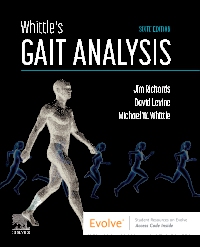
Evolve Resources for Whittle's Gait Analysis, 6th Edition
Resources

-
1. Basic Sciences
2. Normal Gait
3. Pathological and Other Abnormal Gaits
4. Methods of Gait Analysis
5. Applications of Gait Analysis
6. Gait Assessment of Neurological Disorders
7. Gait Analysis in Musculoskeletal Conditions, Prosthetics and Orthotics
8. Gait Analysis of Running and the Management of Common Injuries -
This product is available in the following formats:



















 as described in our
as described in our 